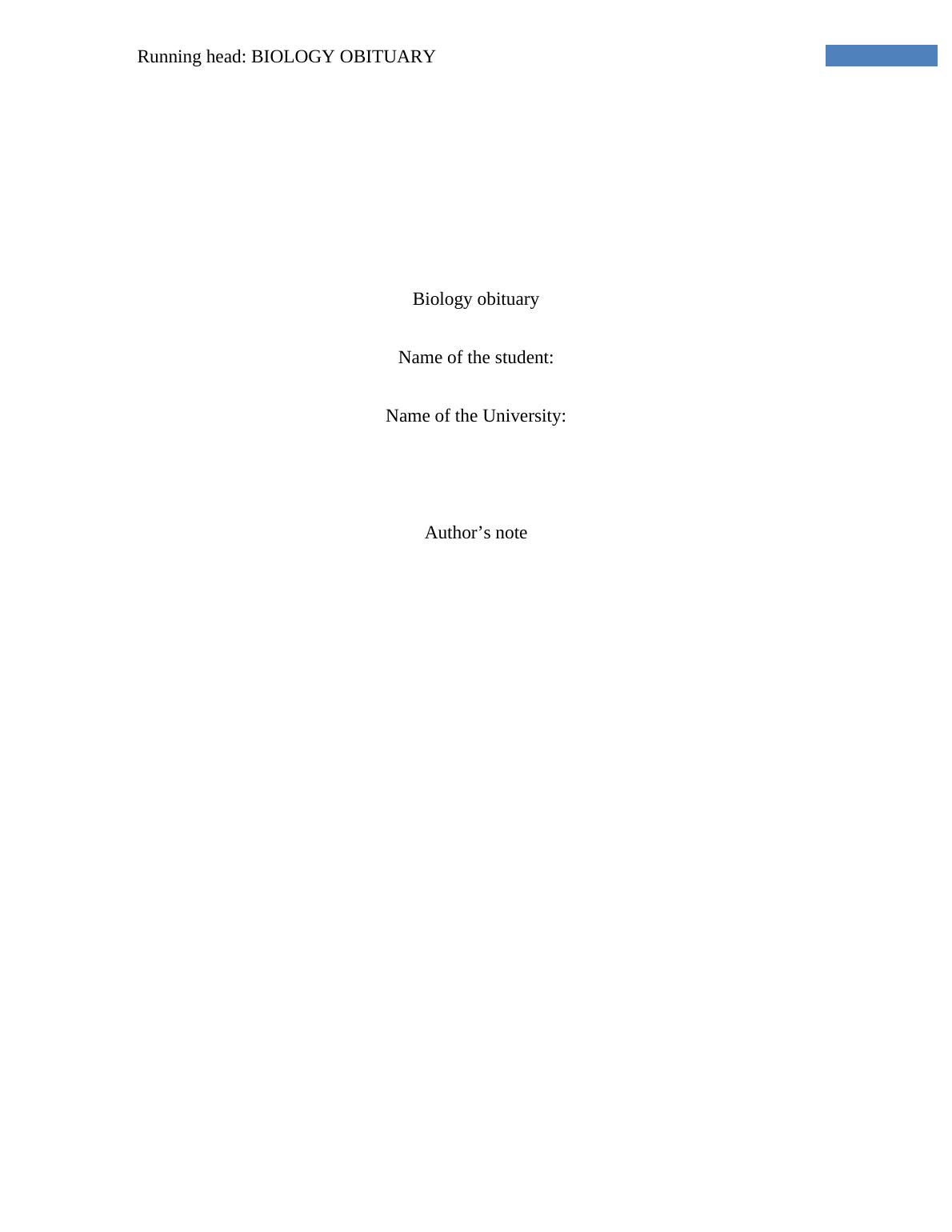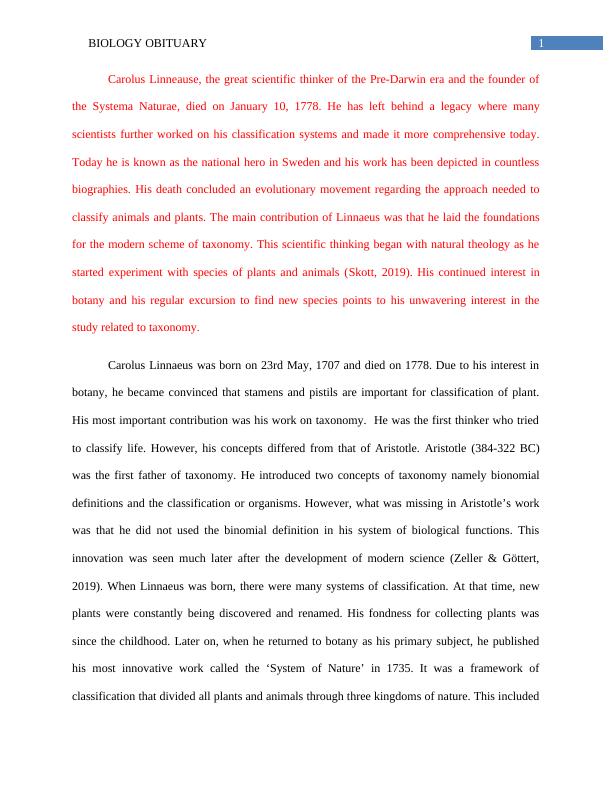Biology Obituary Assessment PDF
Added on 2022-08-25
5 Pages1073 Words14 Views
Running head: BIOLOGY OBITUARY
Biology obituary
Name of the student:
Name of the University:
Author’s note
Biology obituary
Name of the student:
Name of the University:
Author’s note

1BIOLOGY OBITUARY
Carolus Linneause, the great scientific thinker of the Pre-Darwin era and the founder of
the Systema Naturae, died on January 10, 1778. He has left behind a legacy where many
scientists further worked on his classification systems and made it more comprehensive today.
Today he is known as the national hero in Sweden and his work has been depicted in countless
biographies. His death concluded an evolutionary movement regarding the approach needed to
classify animals and plants. The main contribution of Linnaeus was that he laid the foundations
for the modern scheme of taxonomy. This scientific thinking began with natural theology as he
started experiment with species of plants and animals (Skott, 2019). His continued interest in
botany and his regular excursion to find new species points to his unwavering interest in the
study related to taxonomy.
Carolus Linnaeus was born on 23rd May, 1707 and died on 1778. Due to his interest in
botany, he became convinced that stamens and pistils are important for classification of plant.
His most important contribution was his work on taxonomy. He was the first thinker who tried
to classify life. However, his concepts differed from that of Aristotle. Aristotle (384-322 BC)
was the first father of taxonomy. He introduced two concepts of taxonomy namely bionomial
definitions and the classification or organisms. However, what was missing in Aristotle’s work
was that he did not used the binomial definition in his system of biological functions. This
innovation was seen much later after the development of modern science (Zeller & Göttert,
2019). When Linnaeus was born, there were many systems of classification. At that time, new
plants were constantly being discovered and renamed. His fondness for collecting plants was
since the childhood. Later on, when he returned to botany as his primary subject, he published
his most innovative work called the ‘System of Nature’ in 1735. It was a framework of
classification that divided all plants and animals through three kingdoms of nature. This included
Carolus Linneause, the great scientific thinker of the Pre-Darwin era and the founder of
the Systema Naturae, died on January 10, 1778. He has left behind a legacy where many
scientists further worked on his classification systems and made it more comprehensive today.
Today he is known as the national hero in Sweden and his work has been depicted in countless
biographies. His death concluded an evolutionary movement regarding the approach needed to
classify animals and plants. The main contribution of Linnaeus was that he laid the foundations
for the modern scheme of taxonomy. This scientific thinking began with natural theology as he
started experiment with species of plants and animals (Skott, 2019). His continued interest in
botany and his regular excursion to find new species points to his unwavering interest in the
study related to taxonomy.
Carolus Linnaeus was born on 23rd May, 1707 and died on 1778. Due to his interest in
botany, he became convinced that stamens and pistils are important for classification of plant.
His most important contribution was his work on taxonomy. He was the first thinker who tried
to classify life. However, his concepts differed from that of Aristotle. Aristotle (384-322 BC)
was the first father of taxonomy. He introduced two concepts of taxonomy namely bionomial
definitions and the classification or organisms. However, what was missing in Aristotle’s work
was that he did not used the binomial definition in his system of biological functions. This
innovation was seen much later after the development of modern science (Zeller & Göttert,
2019). When Linnaeus was born, there were many systems of classification. At that time, new
plants were constantly being discovered and renamed. His fondness for collecting plants was
since the childhood. Later on, when he returned to botany as his primary subject, he published
his most innovative work called the ‘System of Nature’ in 1735. It was a framework of
classification that divided all plants and animals through three kingdoms of nature. This included

End of preview
Want to access all the pages? Upload your documents or become a member.
